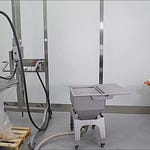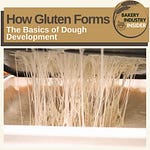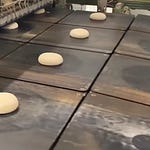However, during the dough mixing process, it undergoes oxidation to form dehydroascorbic acid (DHA) in the presence of oxygen and the naturally occurring enzyme ascorbic oxidase found in wheat flour.
The oxygen required for this transformation is introduced via the air bubbles incorporated during mixing. This facilitates the oxidation of sulphydryl (s–H) groups in gluten-forming proteins, leading to the formation of disulfide (s–s) bonds.
The result? A strengthened gluten network enhances the dough’s ability to retain gas.
Main Functions
Enhanced Dough Gas Retention
As mentioned, reinforcing the gluten structure allows the dough to trap carbon dioxide more effectively, resulting in an increased oven spring.
The strengthened gluten matrix also minimizes gas leakage during fermentation, leading to consistent loaf volumes.
Improved Crumb Structure and Freshness
The oxidation effect of AA results in bread with a finer crumb structure characterized by smaller, more uniform air cells.
This contributes to a softer texture and resiliency, allowing the bread to recover its shape after compression, a characteristic that conveys a perception of freshness to consumers.
Influence on Dough Rheology
AA modifies the rheological properties of the dough, making it more resistant to deformation. This ensures better handling and facilitates consistent shaping during the production process.
The enhanced elasticity and stability contribute to improved performance across a variety of baking conditions.
Adaptability to Mixing Techniques
The efficiency of AA depends on the quantity of oxygen introduced during dough mixing. Technologies such as pressure-vacuum mixers or mixing in oxygen-enriched environments, can optimize AA’s oxidation potential.
Suitability for No-Time Dough Systems
AA’s action is most effective during the mixing phase. Its impact diminishes as yeast fermentation removes residual oxygen from the dough. At that point, AA can no longer function as an oxidizing agent, reducing its effectiveness in dough systems with extended fermentation times.
Source: https://lnkd.in/dTbC4qkK











